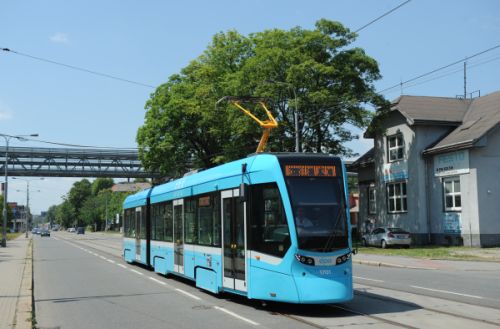The Light Rail and Tram: The European Outlook statistics brief found that Germany and central Europe make up half of all patronage, with the rest split between southeastern Europe, France, Poland, the Benelux countries (Belgium, The Netherlands and Luxembourg), western Mediterranean, Nordic/Baltic and the British Isles.
Between 2015 and 2018, light rail infrastructure in Europe grew by 3.9% from 8943km to 9296km, with ridership growing 6.9% from 9740 million to 10,422 million passengers between 2015 and 2018. Light rail now carries as many passengers as metros and regional/commuter rail, and 10 times more passengers than air travel in Europe. The average light rail journey in Europe is 3.27km.
The busiest light rail network in Europe is in Budapest, Hungary, with 411 million passengers, while Berlin takes the title of longest light rail network in Europe at 193km. Ridership growth varies from region to region, ranging from 17.5% in the British Isles to 1.5% in Poland.
There are notable differences between network structures across the countries. While the average European line is 7.3km long, they tend to be longer on average in countries with newer systems and a limited number of lines, while older, more complex systems feature lower average line length.
The fleet operating on the 1275 light rail lines in Europe consists of 20,750 trams and LRVs, with 51% of this fleet comprising partial or full low-floor vehicles, ranging from countries with almost 100% such as France, Spain, Ireland, Britain and Norway to those with much lower percentages.
The average annual mileage per vehicle in Europe is 52,000km, ranging between 38,700km and 77,500km. The discrepancy can be partly explained by the fleet age structure. In addition, this value is theoretical and based on the assumption that all vehicles are used equally.
UITP says that with continued pressure to reduce congestion, tackle poor air quality in cities and reduce greenhouse gas emission contributing to climate change, light rail will continue to obtain support of decision-makers and the travelling public in Europe.
However, much attention and resources will go into the maintenance, modernisation and replacement of assets to keep ageing systems attractive and fit for purpose. For this reason, the growth of green-field projects in Europe will continue to slow down.
For detailed information on light rail projects and fleets from around the world, subscribe to IRJ Pro.

